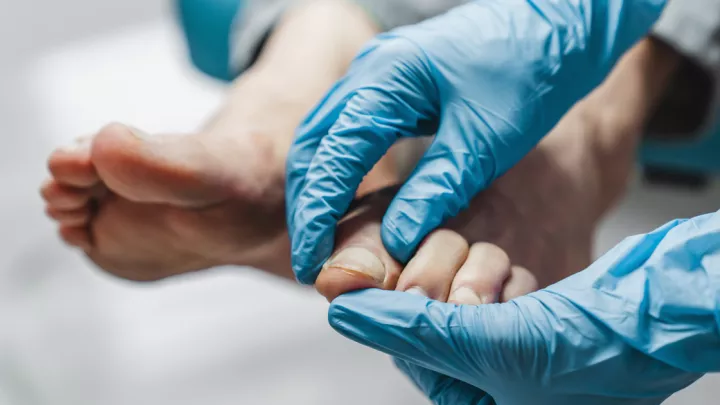How to treat bunion pain and when to consider surgery

A bunion is a foot condition that shows up as a bump or painful area around the big toe joint. The problem starts in the alignment of the hip, knee and leg. This causes the foot bones to move out of place, creating the bunion over time. Bunions are most often seen in adults but can be present from birth.
If you think you may have a bunion, talk to your primary care provider. They may refer you to a foot and ankle specialist for further diagnosis and treatment.
Nonsurgical treatment options for bunions
Short of surgery, no treatments can reverse a bunion. However, some treatments can help manage symptoms. These include:
- Toe spacers or sleeves: If you have callouses around your bunion, toe spacers and toe sleeves can provide relief. However, they won’t get rid of the bunion. You can buy them online or at your local pharmacy. You can also ask your doctor for recommendations.
- Bunion correctors: “I don’t recommend bunion correctors to patients because they won’t fix the deformities that cause bunions,” says orthopaedic surgeon Alex Sawatzke, MD. “However, if they help relieve your symptoms, there’s no harm in using them.”
- Stretching: Calf stretches can help relieve pain caused by bunions. These stretches are something you can do on your own. You can also ask your provider for stretching recommendations.
- Shoes: Because bunions can make wearing shoes painful, Dr. Sawatzke recommends shoes with a wide and deep toe box. “Make sure the toe box is wide enough so it doesn’t push against the toes,” he says. “A stretchy or mesh fabric will also place reduced pressure on bunions and hammertoes.”
When to consider bunion surgery
According to Dr. Sawatzke, many patients are satisfied with nonsurgical treatment of bunions, at least for a while. “Most patients won’t choose surgery until the bunion causes pain, callouses, or other toe deformities,” he says. “Bunion surgery is rarely done for cosmetic reasons alone.”
Bunions can eventually cause deformities in the lesser toes, such as hammertoe or cross-over deformities. These deformities can be painful and make it hard to fit into a regular shoe. Often, these lesser toe deformities lead a person to consider surgery.
Surgeries to correct bunions and other toe deformities are outpatient procedures. However, it does take time for the bones to heal. “Sometimes, a patient can put weight on their heel after two weeks,” says Dr. Sawatzke. “But you won’t resume normal heel-to-toe walking until about 10 weeks after surgery. You’ll also wear a postoperative shoe for about six weeks.”
Every surgery to correct bunions and other toe deformities is different. Your orthopaedic surgeon may use several different procedures depending on your bunion type. Newer, minimally invasive techniques can present less risk of infection, postoperative pain and stiffness. However, not all patients are candidates for them. A foot and ankle specialist can recommend the procedures they believe will provide the best results.






